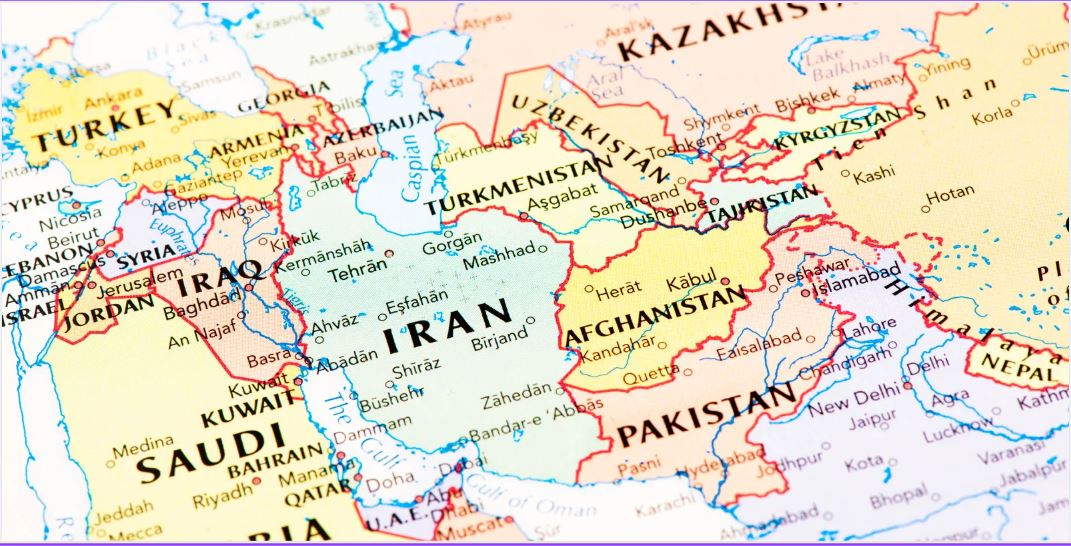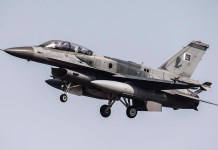OPED by Mohammad Suhail & A.X. Ravshanov
The historic city of Samarkand, a symbol of cultural confluence and economic exchange along the Silk Road, is currently hosting the First Central Asia-European Union (CA-EU) Summit.
This highly anticipated event marks a critical juncture in Eurasian geopolitics, as the European Union is intensifying its engagement with Central Asia, a region historically dominated by Russian and Chinese influence.
The summit (April 3-4) is not only a diplomatic milestone but also a testament to Uzbekistan’s evolving foreign policy under President Shavkat Mirziyoyev, who has positioned the country as a hub for regional connectivity and economic modernization.
The convergence of European and Central Asian leaders in Samarkand represents an effort to reimagine historical trade routes for the modern era, underscoring aspirations for enhanced economic integration, climate resilience, and digital connectivity. This gathering holds significant promise, but its long-term impact will depend on the ability of both parties to navigate the complex geopolitical landscape and balance ambition with strategic realism.
Samarkand, once the heart of Timur’s empire and a vibrant epicenter of Silk Road commerce, has long embodied Central Asia’s historical role as a bridge between East and West. Its selection as the venue for the summit carries symbolic weight, highlighting the region’s resurgence on the global stage.
Central Asia, once relegated to a peripheral role following its absorption into the Russian Empire and later the Soviet Union, has witnessed a revival of its strategic importance in the post-Soviet era.

The region’s vast energy resources, critical mineral reserves, and key transit corridors have made it a focal point for great power competition, particularly between Russia, China, and the West.
The European Union’s engagement with Central Asia, initially outlined in its 2007 Strategy, remained relatively limited for years due to competing global priorities and regional instability. However, the geopolitical landscape has shifted dramatically, particularly after the outbreak of the Ukraine War in 2022, which has prompted the EU to seek alternative energy suppliers and diversify trade routes away from Russia.
Against this backdrop, the Samarkand Summit represents a strategic pivot, signalling Europe’s renewed commitment to the region amid intensifying global rivalries.
Trans-Caspian Transport Corridor
A major component of the summit’s agenda is the development of the Trans-Caspian Transport Corridor (TCTC), a modern reimagining of ancient Silk Road pathways. This initiative aims to enhance trade connectivity between Europe and Central Asia via the Caucasus, bypassing Russian-controlled transit networks.
The proposed corridor is expected to significantly reduce transportation times, offering Central Asian economies an opportunity to expand their trade partnerships and reduce their dependence on China’s Belt and Road Initiative (BRI).
For the European Union, this route presents a viable alternative to Russian energy supplies, enhancing Europe’s strategic autonomy in an increasingly polarized global trade environment. While the TCTC’s economic benefits are substantial, the project also comes with notable risks.
Russia and China, viewing the corridor as a challenge to their regional influence, may respond with economic or political countermeasures, potentially destabilizing the region.
Additionally, the corridor’s success hinges on significant infrastructure investments, with estimates suggesting that US$20–30 billion will be required to modernize ports, railways, and customs facilities. Given the financial constraints faced by many Central Asian states, securing sustainable funding mechanisms will be essential for the corridor’s viability.
Green Energy
Beyond infrastructure, the summit will also address green energy and climate resilience—an area where the European Union seeks to position itself as a key partner for Central Asia. With vast solar and wind energy potential, the region presents an attractive landscape for renewable energy investments.
The EU’s commitment to sustainability is evident through initiatives such as the €1.5 billion (US$1.64 billion) Central Asia Water and Energy Program, which aims to modernize irrigation systems and promote clean energy development. These efforts align with the broader objectives of the EU Green Deal, reinforcing Brussels’ leadership in global climate governance.
However, implementing these projects faces challenges, particularly due to the regulatory and institutional constraints of Central Asia’s state-controlled economies. The transition to green energy will require significant policy reforms to attract private sector investments, an area where Central Asian governments have traditionally been hesitant.
Additionally, resource competition remains a pressing issue—water-intensive renewable energy projects, such as hydropower, could exacerbate long-standing disputes between countries like Uzbekistan and Tajikistan, potentially hindering regional cooperation.
Digital Connectivity
The European Union’s digital agenda will also feature prominently in the summit, with a focus on positioning Central Asia as a hub for secure connectivity. Through the “Connecting Central Asia” (C4CA) initiative, the EU aims to promote digital infrastructure, e-governance, and cybersecurity collaboration.
Enhancing high-speed internet access and supporting digital transformation could modernize Central Asian economies and foster new opportunities for small and medium-sized enterprises. Additionally, the initiative provides an alternative to Chinese digital infrastructure investments, which have raised concerns over surveillance and data security.
However, digital sovereignty remains a contentious issue, as Central Asian governments may resist EU regulatory frameworks, fearing a loss of control over digital governance. Furthermore, there is a risk that digital expansion could deepen existing inequalities, as rural areas with limited technological access may be left behind in the region’s digital transformation.
Opportunities And Challenges
While the CA-EU partnership presents numerous opportunities, it is not without significant challenges. For Central Asia, engagement with Europe offers a means of geopolitical diversification, reducing overreliance on Moscow and Beijing. The European Union’s support for Uzbekistan’s accession to the World Trade Organization exemplifies this broader shift towards multilateralism and economic integration.
Additionally, EU investments in transport, energy, and digital infrastructure have the potential to drive long-term economic growth, with the TCTC alone projected to increase Central Asia’s GDP by 3–5% by 2030. Cultural diplomacy further reinforces these ties, with initiatives promoting heritage conservation, educational exchanges, and people-to-people connections.
However, the deepening of EU-Central Asia relations is likely to provoke a geopolitical backlash. Russia, through its Eurasian Economic Union and BRICS, and China, via the Shanghai Cooperation Organization, may perceive the EU’s involvement as a strategic encroachment and respond with economic or political pressures.
Furthermore, the EU’s insistence on governance and human rights reforms as a condition for deeper engagement could create friction, particularly with more authoritarian regimes in the region. Balancing democratic values with pragmatic diplomacy will be crucial for sustaining long-term cooperation.
The Samarkand Summit’s geopolitical ambitions echo historical precedents, drawing parallels to the 19th-century “Great Game,” when imperial powers competed for influence in Central Asia.
However, unlike the adversarial rivalries of the past, the EU’s approach emphasizes connectivity and cooperative engagement. Nevertheless, this narrative of partnership must contend with the realities of power asymmetries, as critics argue that European investments in critical minerals and infrastructure could reflect a form of modern economic extraction.
The works of scholars like Edward Said have long cautioned against the persistence of neo-imperial dynamics in global development initiatives, a perspective that remains relevant as the EU deepens its involvement in the region. Similarly, modern Central Asian literature reflects the region’s ongoing struggle between tradition and modernization—a theme explored in Hamid Ismailov’s The Railway, which captures the tensions of an evolving post-Soviet landscape.
These cultural and historical dimensions add complexity to the discourse surrounding the summit, reinforcing the need for a balanced and mutually beneficial partnership.
Ultimately, the success of the Samarkand Summit will depend on the ability of both the European Union and Central Asian states to navigate the complexities of their evolving relationship. While the EU’s investment in transport, energy, and digital sectors offers significant economic potential, ensuring that these initiatives serve the long-term interests of Central Asia will be critical.
The EU must temper its strategic ambitions with a commitment to local priorities, while Central Asian governments should leverage this partnership to enhance institutional resilience and sustainable development.
As the historic city of Samarkand hosts this high-level gathering, its legacy will be determined by whether the summit fosters genuine cooperation or simply reaffirms historical cycles of external influence. The challenge lies in forging a partnership that is equitable, enduring, and capable of meeting the demands of a rapidly changing global landscape.
As 14th-century Persian poet Hafez aptly stated, “The world is a bridge—pass over it, but build no house upon it.” The CA-EU partnership must navigate this bridge wisely, ensuring that its ambitions foster genuine collaboration rather than another fleeting geopolitical experiment.
- The authors, Mohammad Suhail and A.X. Ravshannov, are professors at Samarkand State University.
- VIEWS PERSONAL OF THE AUTHORS.
- Mail us at: editor (at) eurasiantimes.com




